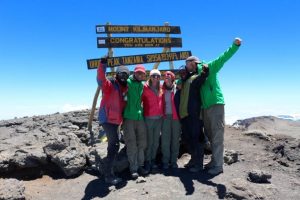Comparing the Difficulty: Climbing Mount Kenya vs Kilimanjaro
When it comes to climbing iconic mountains in Africa, Mount Kenya and Kilimanjaro are often at the top of many climbers’ bucket lists. Both mountains offer breathtaking views and unique challenges for those seeking a high-altitude adventure. However, before embarking on either ascent, it’s important to understand the differences in difficulty level between the two.
Assessing the Challenge: Mount Kenya vs Kilimanjaro
Mount Kenya, located in Kenya’s central highlands, is the second-highest mountain in Africa after Kilimanjaro. It is an extinct volcano with multiple peaks, the highest of which is Batian at 5,199 meters (17,057 feet) above sea level. Climbing Mount Kenya requires a good level of fitness and technical climbing skills, particularly for the more technical routes such as the Nelion and Batian peaks.
On the other hand, Kilimanjaro, located in Tanzania, is the highest mountain in Africa and the highest freestanding mountain in the world. Its highest peak, Uhuru Peak, stands at 5,895 meters (19,341 feet) above sea level. Although Kilimanjaro is taller than Mount Kenya, it is often considered less technically challenging due to the non-technical nature of the ascent via the Marangu or Machame routes.
Analyzing the Difficulty Level of Each Ascent
Mount Kenya
Climbing Mount Kenya involves navigating through diverse landscapes, including equatorial rainforests, alpine meadows, and rocky terrains. The ascent typically takes between 3 to 5 days, depending on the chosen route and acclimatization needs. The technical difficulty of Mount Kenya varies depending on the route chosen, with the easier routes like Sirimon and Naro Moru being more accessible to novice climbers.
Kilimanjaro
Kilimanjaro offers several routes to the summit, each with its own challenges and characteristics. The Marangu route, also known as the "Coca-Cola" route, is the easiest and most popular route, while the Machame route, known as the "Whiskey" route, is more scenic but slightly more challenging. Despite its non-technical nature, climbing Kilimanjaro still requires a good level of fitness and proper acclimatization due to the high altitude.
In conclusion, both Mount Kenya and Kilimanjaro present unique challenges for climbers of all levels. While Mount Kenya may offer more technical climbing opportunities, Kilimanjaro’s altitude and longer ascent present their own set of challenges. Ultimately, the choice between the two mountains will depend on individual preferences and climbing experience.
For those interested in embarking on either the Mount Kenya or Kilimanjaro ascent, Sunset Africa Safari offers guided tours to both mountains. For booking inquiries and more information, please contact Sunset Africa Safari at info@sunsetafricasafari.com.


